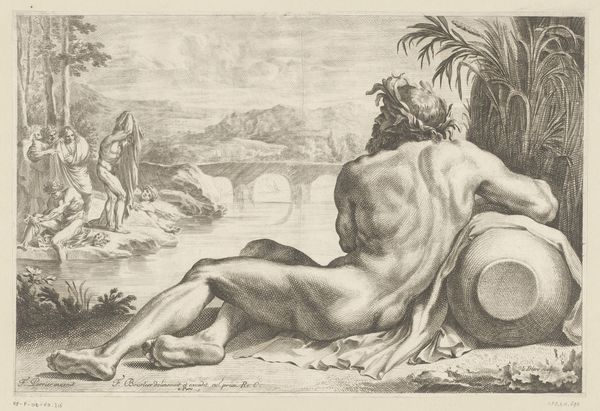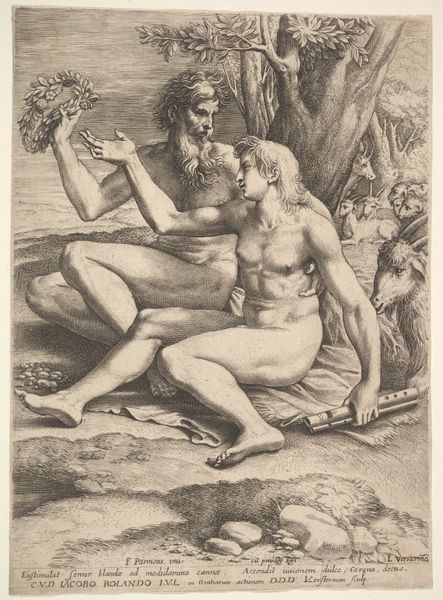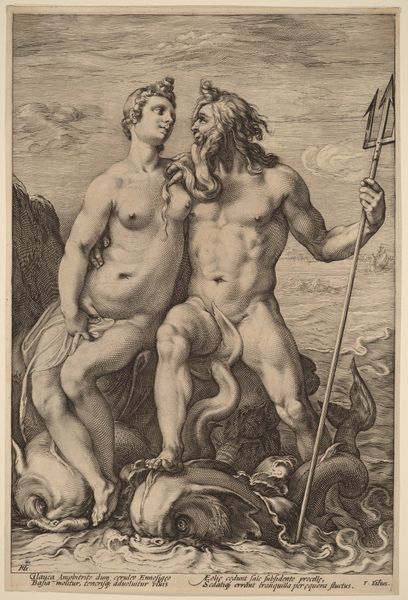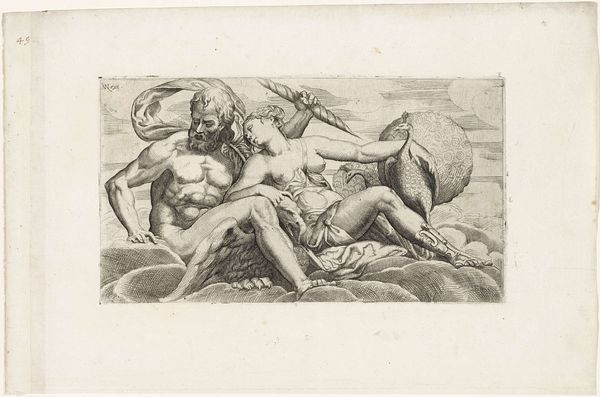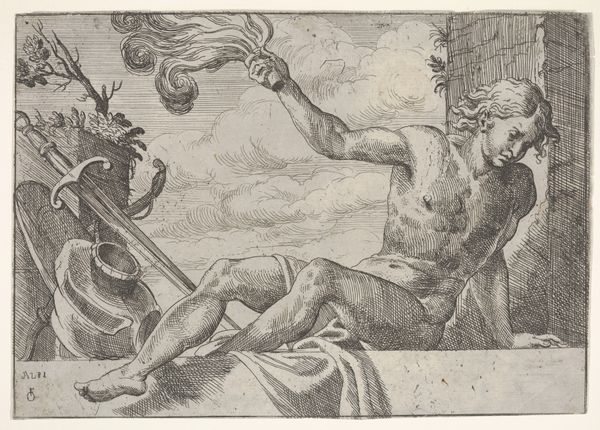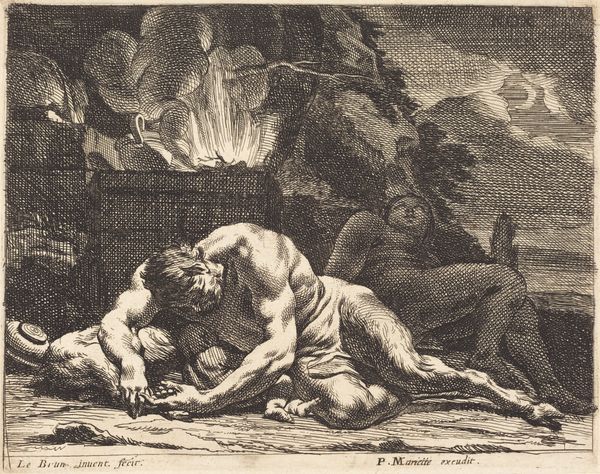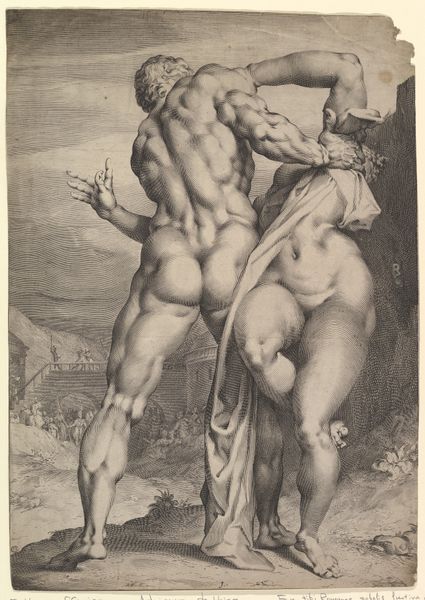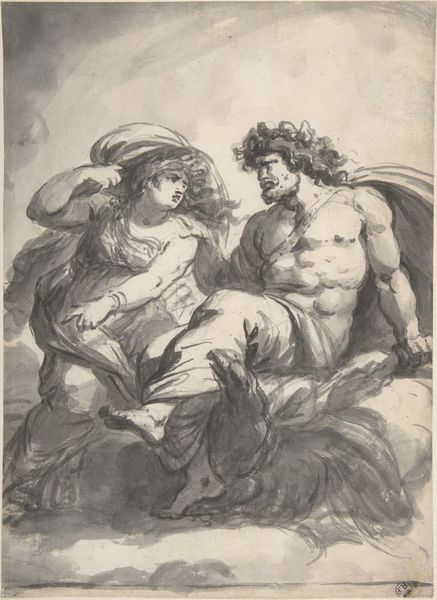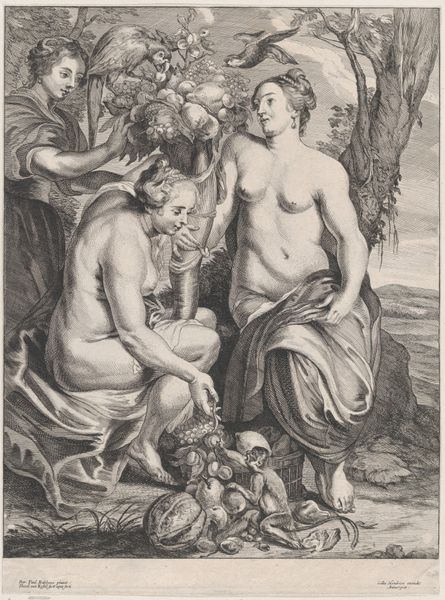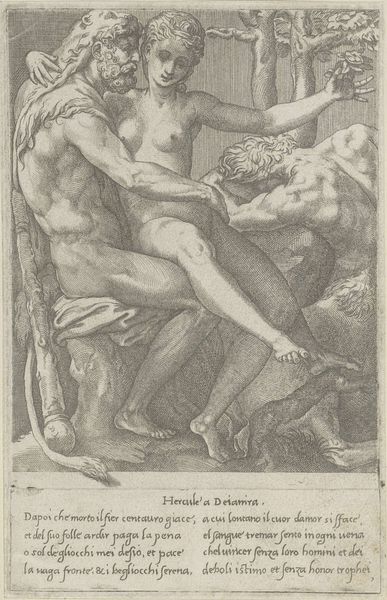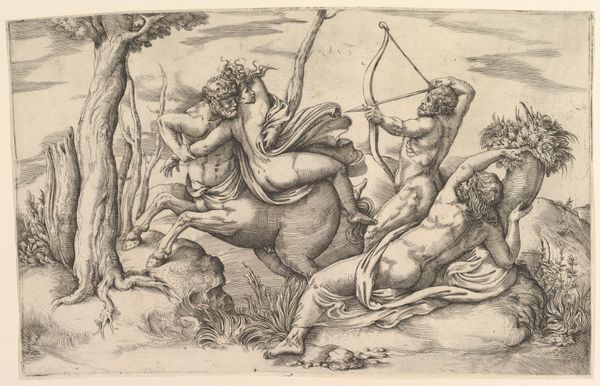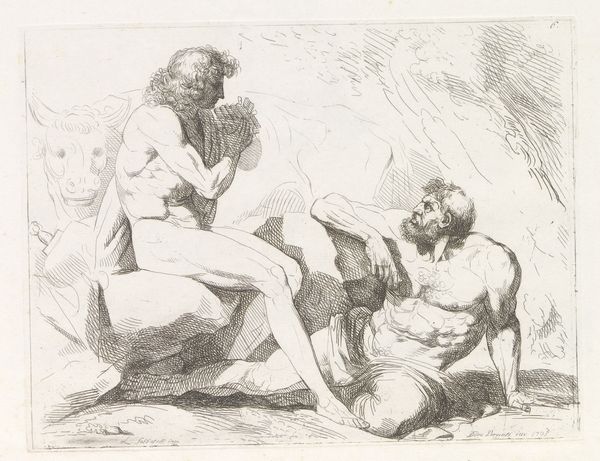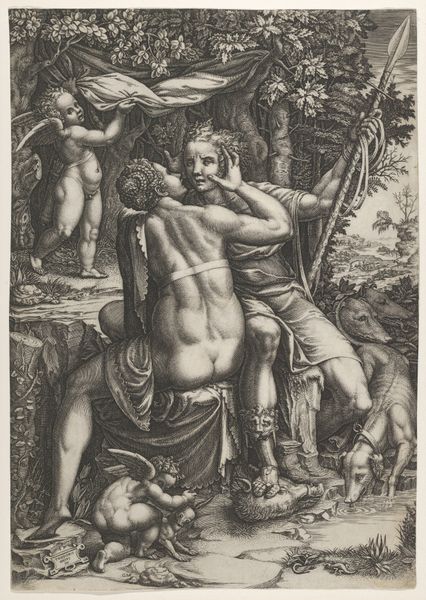
River gods reclining before a seascape 1651 - 1682
0:00
0:00
drawing, print, engraving
#
drawing
#
baroque
# print
#
landscape
#
figuration
#
history-painting
#
nude
#
engraving
#
sea
Dimensions: Sheet (trimmed): 5 5/8 × 9 1/4 in. (14.3 × 23.5 cm)
Copyright: Public Domain
Curator: Before us, we have "River gods reclining before a seascape," an engraving by François Bourlier, dating roughly from 1651 to 1682. Editor: It feels staged, in a way. There's an overt classical grandeur that reminds me of theater sets of that time period. Almost artificial. Curator: Certainly. Bourlier engages in the conventional allegorical representation of the time. Note the sculptural definition of the figures, and how their postures seem to echo those seen in classical statuary. Look at how the strong contrast highlights each figure's contours and the intricate textures, from the leaves adorning their heads to the swirling clouds. Editor: Absolutely, the clouds feel especially charged. The strategic employment of cross-hatching and line thickness produces tonal modulation, conveying both form and light. There are even minuscule sailboats at sea which emphasize that classic division between the figures, sea, and sky. But I wonder, how was this imagery received? Baroque art often served specific sociopolitical ends. Curator: In Bourlier's context, the representation of river gods connects to broader allegorical depictions of natural resources. Remember, Louis XIV aimed to project absolute authority. Depicting French waterways through these figures reinforces France's wealth and bounty. The overt references to classical styles also underscore the king's cultivated taste and supposed moral virtues. Editor: I suppose the nudity can be interpreted as a reference to idealized forms and power dynamics? These bodies feel both real and abstracted through the careful lines of the engraving. Curator: The erotic element, no doubt, was part of its visual appeal, but I'd argue it's a byproduct of classical revival more than anything. In sum, the formal structure of the engraving enhances its didactic effect. Editor: From my viewpoint, the piece is as fascinating in its formal precision as it is in the power structures that propelled its creation and consumption. Curator: It serves as an exceptional testament to the period’s visual strategies.
Comments
No comments
Be the first to comment and join the conversation on the ultimate creative platform.
